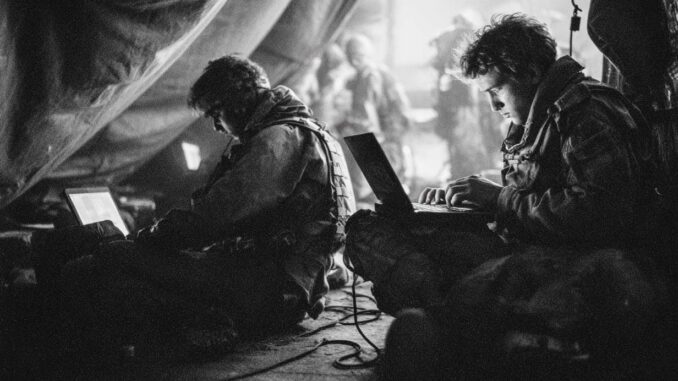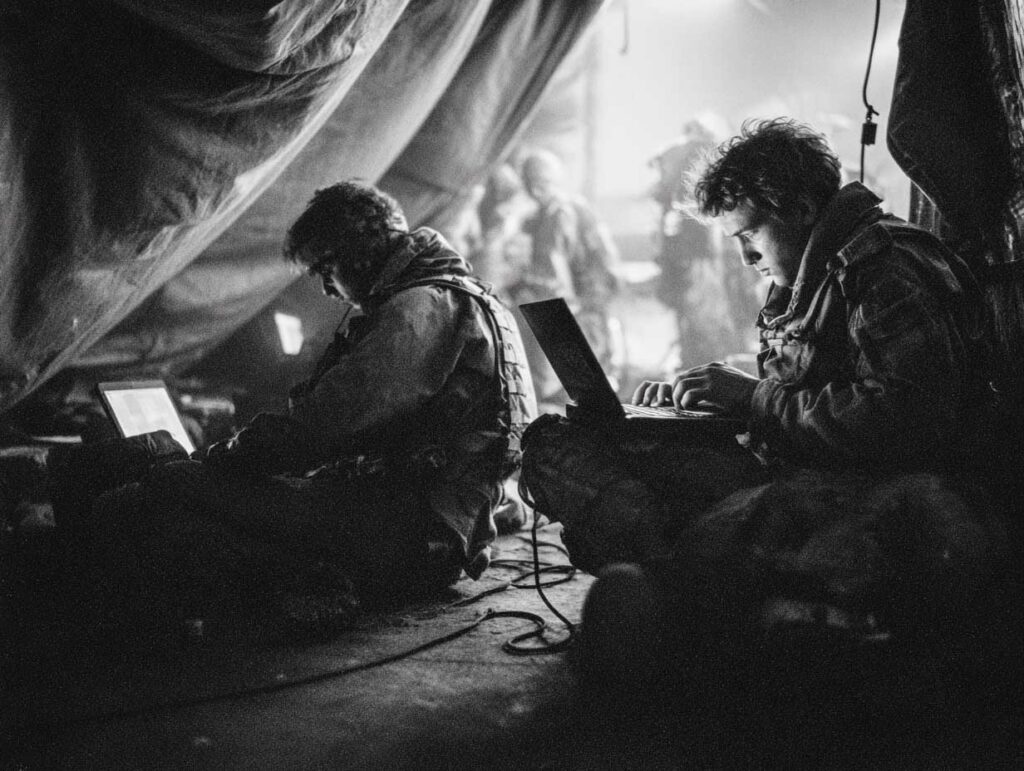
Israel and Iran are waging an information war assisted by artificial intelligence, deploying deepfakes, bots and rival narratives to dominate the narrative.
In summary
Israel and Iran are engaged in a digital propaganda war fuelled by artificial intelligence (AI). Each is producing doctored videos, deepfakes and polarised narratives to win over hearts and minds. Israel has a qualitative advantage in technology and expertise, while Iran plays on numbers and exploits domestic discontent — but struggles to convince its own population due to economic dysfunction and clerical corruption. The Israeli-American military operation in June 2025, aimed at destroying Iran’s nuclear capabilities, was accompanied by a digital media offensive. Iran responded with cyber retaliation, disinformation campaigns and manipulated videos to influence public opinion. In this conflict, narrative matters almost as much as ammunition: controlling the narrative has become a strategic weapon in its own right.
The context of the Israel-Iran conflict: from armed confrontation to narrative warfare
The conflict between Israel and Iran is not new: since the 1979 revolution, their hostility has been compounded by ideological, strategic and regional clashes. Israel, with its strong alliances in the Gulf and technological expertise, seeks to counter Iranian expansion and its nuclear programme. Iran, for its part, relies on anti-Western rhetoric, demographic growth and a vast network of regional proxies.
In this asymmetrical struggle, information warfare plays a central role. Each side deploys its state media, social networks and diplomatic channels to influence domestic and international opinion, legitimise its actions and discredit its adversary. With the emergence of generative AI, this battlefield is becoming more complex: it is now possible to create videos, speeches and realistic manipulated images, known as deepfakes, to steer perceptions.
According to Radware, as soon as the Israeli strikes began, Iran launched campaigns of disinformation, intimidation and fake news, targeting Israeli society, but also its own citizens to conceal losses and motivate resistance. The digital conflict accompanies the bombings, cyberattacks and traditional retaliation.
Some media outlets point out that both sides are resorting to ‘narrative saturation’: mistranslations, videos taken out of context, and images edited or produced by AI. Videos simulating destruction in Tel Aviv have circulated, even though they were produced earlier. It is difficult to separate fact from fiction in this constant flow of information, which reinforces the role of verification organisations and digital reputation management.
AI tactics and propaganda: techniques and examples
Deepfakes, generated videos, bot amplification
The use of AI makes it possible to generate credible videos showing explosions, fictional speeches or war scenes. These videos circulate rapidly on mobile platforms, fuelled by bots or relay accounts. TechTarget reports that in the Iran-Israel conflict, aerial images showing destruction in Tel Aviv were generated with Google AI and broadcast as current events. Verifiers identified signs of falsification, but the message had already reached its audience.
Virality is amplified by AI botnets, automated accounts that massively relay manipulated content. We are seeing a strategy of coordinated influence, where favourable content is promoted and criticism is relegated or censored.
Cyber excesses and institutional disinformation
At the same time, cyberattacks are targeting media outlets, communication infrastructures and broadcasting platforms. The aim is to disrupt the dissemination of contrary information, intimidate or force the removal of content. Iran, already sanctioned for its cyberpropaganda efforts, uses bots, fake accounts and troll campaigns to sow confusion.
Reports show that Israel has an advantage in AI capabilities, in its ability to identify signs of disinformation and respond quickly. Despite this, Iran continues to inject its narratives into the international debate, sometimes benefiting from an echo in pro-Iranian communities or media outlets critical of the West.
Targeted storytelling, internal disinformation, legitimisation of actions
Israel exploits Iranian resentment towards the regime: economic difficulties, corruption of the clergy, popular discontent. Through Persian-language content, targeted messages and stories of dissent, the aim is to undermine the pillars of the Iranian regime’s legitimacy.
Iran, for its part, attempts to mobilise the population through narratives of resistance, martyrdom, and Western conspiracy. It distorts figures, minimises losses, accuses its adversary of fictitious crimes, while strengthening internal information control.

Recent events: airstrikes, human losses, concomitant propaganda
In June 2025, Israel launched massive strikes against Iranian nuclear facilities and senior commanders. According to Iran, 935 people died in these attacks, including 79 during the attack on Evin Prison in Tehran. ([turn0search13], [turn0search44]) Iran also claims that the strikes targeted civilians and prisoners. These figures are disputed. Other sources cite more than 1,000 deaths. ([turn0search29])
Israel, for its part, recorded 29 deaths according to parliamentary sources. These losses are accompanied by intense communication campaigns, in which Israel claims to have neutralised the heart of Iran’s nuclear programme with surgical precision and accuses Iran of failing to protect its facilities or leaders.
Videos of destruction in Tel Aviv are circulating, but checks show that they were produced before the war. (TechTarget report) Pro-Iranian media outlets are using these images as proof of an effective response, while Israeli media outlets are denouncing the disinformation.
The digital strategy extends to economic sanctions: Israel is encouraging a reduction in purchases of Iranian oil, with the aim of hitting the regime’s financial resources. This economic war is accompanied by narratives aimed at delegitimising Iran on the international stage.
Strategic consequences, risks and future of AI propaganda
Loss of trust, radicalisation, polarisation
In a landscape saturated with falsified content, trust in information is declining. People are becoming sceptical, distrustful or willing to accept extreme narratives. This weakens democracies and strengthens authoritarian regimes capable of controlling the media.
The internal effects in Iran can be destabilising. If the people perceive their government as reckless or corrupt, the weakening of its legitimacy can encourage dissent. Israel is banking on this divide to increase internal pressure.
Intensification of the narrative war
Rival states could develop even more advanced AI production capabilities, real-time filters, and deepfake detection algorithms. The battlefield of the future will be as much technological as it is military.
Diplomatic alliances, international media, and NGOs playing a verification role will be key players in this information conflict.
Ethical issues, regulation, shadow warfare
The use of AI to manipulate opinion poses challenges: when a state produces misleading videos to justify war, is it a war crime? How should the creation and dissemination of deepfakes be regulated? International legal mechanisms are struggling to keep up with this development.
There is also the risk of gradual escalation: a fake incident created online could be used to justify a real military strike. The trigger threshold could become blurred.
Ultimately, states must choose: tolerate a free but vulnerable digital space, or impose controls and censorship that can be used as weapons against the population.
The Israel-Iran confrontation now goes beyond missiles: it is being played out in networks, algorithms and perceptions. AI has made possible what propagandists have long dreamed of: creating alternative realities, blurring the lines between truth and fiction, and turning narrative into a strategic element. In the face of this media crisis, vigilance, critical education and technological robustness are becoming as essential as air defences.
War Wings Daily is an independant magazine.